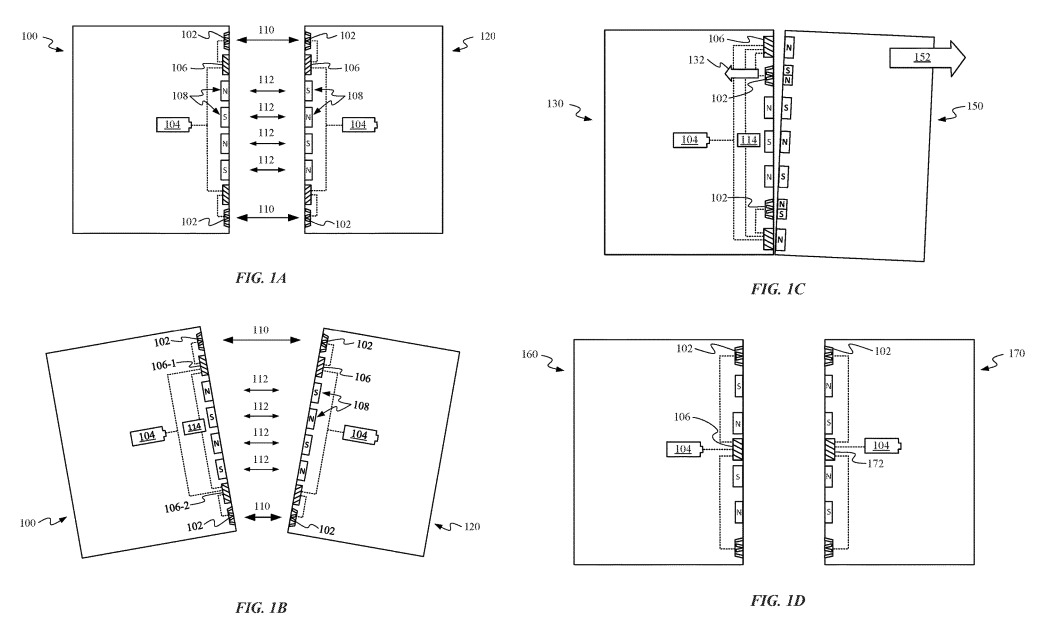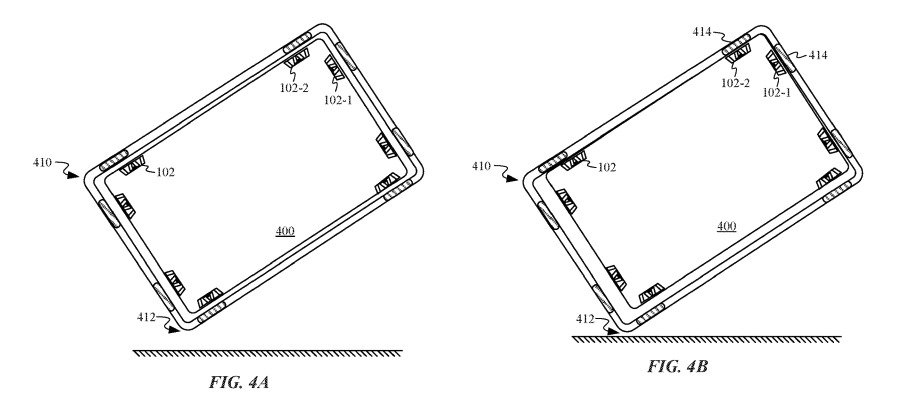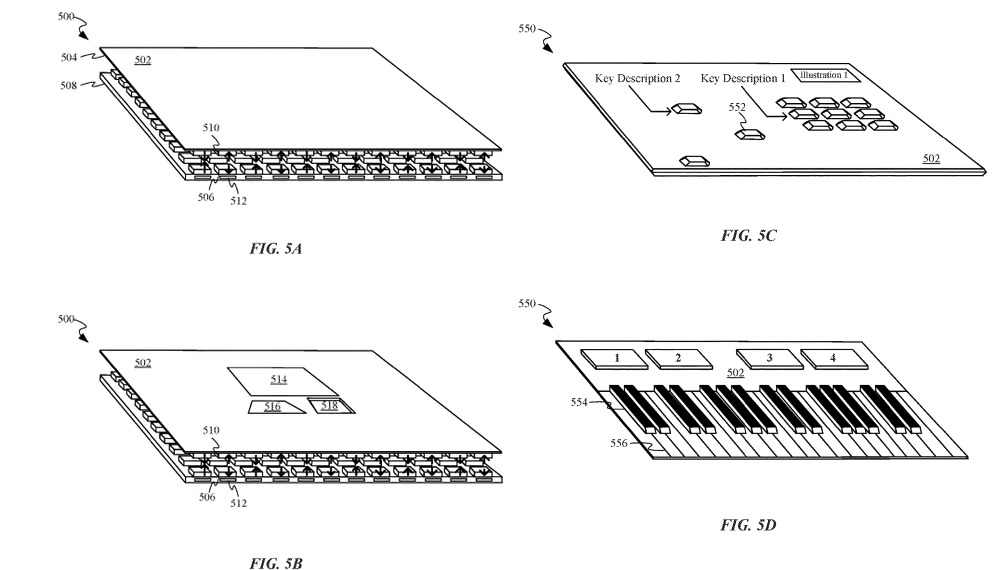Apple is considering ways it could use electromagnets to make changes to the way accessories or devices can magnetically connect to each other, including correcting alignment issues for covers and potentially helping a case provide even more protection for a dropped iPhone or iPad.
Awarded by the U.S. Patent and Trademark Office on Tuesday, the patent for a "Dynamically stabilized magnetic array" describes how electromagnets could be used alongside permanent magnets to improve how magnetic connections function. For the most part, this relates to accessories like the Smart Cover cover for theiPad, which attaches to the side of the tablet using magnets, but it could also apply to other devices.
Most of the time, the magnets used for these purposes are permanent, with a fixed size, strength, and shape that barely changes over time, and are a relatively known quantity. As electromagnets are temporary, they could be used to increase the strength of a magnetic connection for a short period of time, such as if an iPad detects the cover may be accidentally separated if it is bumped or jostled.
While the initial idea is to supplement the existing permanent magnets in a cover, Apple suggests the electromagnets don't need to be on all of the time, instead only turning on when needed. It is also suggested the electromagnets could periodically turn on, in order to force the case to maintain or correct its alignment, such as if a cover isn't correctly lined up on the side of an iPad.
In order to power the electromagnets, Apple suggests the inclusion of a magnetic field sensor in the magnetic array, which will turn on the other electromagnets once it detects a magnet has been placed alongside it. For covers, this would give the effect of the electromagnets turning on once it is close to being in place, with the powered magnets providing the final snap-into-place and alignment.
The same concept could allow for magnetic grips of varying sizes to be added to the edge of a device, activated once a known peripheral or accessory is in use or nearby. When detected, the magnets could turn on in specific places to allow the Apple Pencil to be holstered, for example. With the magnets deactivated when the stylus is removed.
In one notable example, a device is held in place within a case with magnets, keeping the device within the middle section. There is a small boundary between the sides of the device and of the case, caused through the magnets constantly pulling in all directions at once.
At the time a fall is detected, some of the electromagnets in the device are deactivated, dragging the device away from the edge that is likely to impact the floor and closer to the opposite side. This creates a larger buffer in the case on the edge or corner that will be hit, potentially preventing damage to the tablet.
Electromagnet arrays could also be used to provide tactile feedback to the user, such as with the placement of a cover sheet "keyboard" on top of a touch display. The array behind the display could repulse the "key" sections of the covering keyboard, giving a sense of resistance to the user when the key is typed.
While the idea of using magnets and electromagnets in these ways may be appealing, Apple does register a considerable amount of patent applications every week, and not all concepts make their way into commercial products. Despite the appearance of a patent, there is no guarantee that Apple will follow through with this idea in the future.
The last section of the patent may have some potential usage alongside other patents and applications that Apple has examined relating to alternative keyboards. Previously it has applied for a patent for a "keyless keyboard" with haptic feedback, and was granted a patent for using a second screen in place of a keyboard.
Apple has also looked into ways to make the Smart Cover smarter, such as displaying essential information when only part of a cover is lifted off the device, and covers with illuminated sections and extra displays.
 Malcolm Owen
Malcolm Owen










-m.jpg)






 Charles Martin
Charles Martin


 William Gallagher
William Gallagher

 Christine McKee
Christine McKee
 Wesley Hilliard
Wesley Hilliard









4 Comments
Perhaps they can detect when a person or iPad "falls" similar to the Apple Watch 4 and perform some safety features based upon that event(s).
Damn. As interesting as this patent is, I was hoping it was some kind of hoverboard anti-drop/anti-impact application. An advanced accelerometer chip developed and manufactured by Apple detects a fall, and uses an electromagnetic field to react with the Earth's magnetic field, and stops 2' feet from any surface, in mid-air, and allows the user to 'catch' it.
In related news, Apple debuts a flying car.
It seems like electromagnets use too much energy to be useful in a device that’s not plugged in, unless they activate only rarely and at a low level of power/strength.